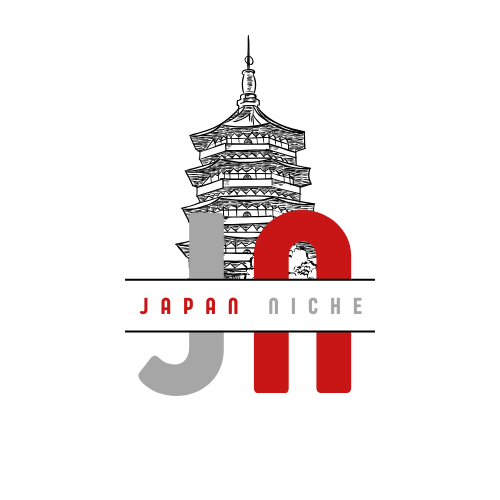Japan is a country known for its deep cultural traditions, technological innovations, and social harmony. But beneath the surface lies a growing phenomenon that reveals a much darker side of modern society: hikikomori (引きこもり). This term, translating to “pulling inward,” describes individuals who completely withdraw from society, confining themselves to their homes, often to a single room, for months or even years at a time. They disengage from work, school, and all social activities, leading isolated, reclusive lives.
As the owner of JapanNiche, I believe it’s essential to shed light on issues like this that are both cultural and deeply human. Let’s dive into what hikikomori is, who experiences it, why it happens, and whether there’s a way out.
What is Hikikomori?
Hikikomori refers to severe social withdrawal, where individuals isolate themselves from society, usually for at least six months or longer. The condition predominantly affects adolescents and young adults, though cases involving older individuals, particularly in their 40s or 50s, are becoming increasingly common. In many cases, hikikomori do not leave their homes—sometimes not even their rooms—for years. Instead, they live in a kind of suspended reality, cut off from friends, school, or work, depending entirely on their families or the internet for interaction with the outside world.
This phenomenon is especially prevalent in Japan, where the pressures of education, work, and social expectations are particularly intense.
Who Becomes Hikikomori?
While hikikomori is recognized globally, it is most prevalent in Japan. The people affected are often:
- Young men, although more women are being identified as hikikomori in recent years.
- High school and university students who experience academic failure, bullying, or social anxiety.
- Adults in their 20s and 30s who are unable to meet society’s expectations of career and family life.
- Middle-aged individuals, some of whom have lived in isolation for decades, trapped in a cycle of reclusion.
Though it can happen to anyone, certain cultural factors make Japan particularly susceptible to this issue. The intense pressure to succeed academically, find stable employment, and conform to societal norms means that many who cannot keep up feel ashamed and retreat from the world.
Why Do People Become Hikikomori?
There are numerous triggers for hikikomori behavior, and they often overlap with mental health issues like depression and anxiety. However, the key reasons include:
- Academic Pressure: The Japanese education system is notoriously competitive. Students are often driven to extremes to succeed, and those who struggle or fail feel immense pressure. This can push some to withdraw entirely.
- Bullying (Ijime): Many hikikomori were bullied in school. In Japan, bullying can be intense, and those who experience it often have no escape other than retreating into their homes.
- Workplace Stress: Japan’s work culture is well-known for its long hours and high demands. The inability to find or maintain stable employment—especially with the rise of “freeters” (those working low-paying, part-time jobs)—leads to feelings of shame, inadequacy, and ultimately withdrawal.
- Mental Health and Social Anxiety: Mental health issues like depression and social anxiety are common factors, but stigma surrounding mental illness in Japan prevents many from seeking help. The desire to avoid situations that cause distress drives them to shut themselves off from society.
- Family Dynamics: Some hikikomori come from overprotective families that unintentionally foster dependence. In many cases, parents support their reclusive children, providing food, money, and care, which can unintentionally enable their isolation.
What Are the Symptoms?
A hikikomori typically exhibits:
- Complete social withdrawal for six months or more.
- Avoidance of social situations like school, work, or even family gatherings.
- Disturbed sleep patterns, often staying awake all night and sleeping during the day.
- Lack of motivation for anything beyond basic survival (eating, sleeping, etc.).
- Emotional distress: Many hikikomori suffer from anxiety, depression, and feelings of failure.
They may spend their days engaging in solitary activities such as:
- Playing video games for hours or even days on end.
- Watching anime or movies.
- Browsing the internet or participating in online forums.
- Reading books or comics, but with no interaction with the outside world.
Historical Background of Hikikomori
The term hikikomori emerged in the 1990s but describes behavior that may have existed long before that. Japan’s economic boom in the 1980s and subsequent slowdown in the 1990s placed unprecedented pressure on the younger generations. Coupled with the collapse of the lifelong employment system and a rigid education-to-work pipeline, young people began to experience new forms of stress and alienation.
This crisis became more visible in the late 1990s when the Japanese Ministry of Health, Labor, and Welfare officially recognized hikikomori as a social phenomenon. Since then, the number of hikikomori has steadily grown, with estimates suggesting there are over a million hikikomori in Japan today.
How Long Do Hikikomori Stay Isolated?
The duration of hikikomori can vary widely. While some may isolate themselves for six months to a few years, others remain in this state for decades. In fact, cases of “80-50” syndrome—where 80-year-old parents are still caring for their 50-year-old hikikomori children—are becoming alarmingly common.
For these individuals, the longer they remain isolated, the harder it becomes to reintegrate into society. It’s not just about re-learning social skills but overcoming the overwhelming fear of rejection, failure, or social interaction.
Can Hikikomori Be Cured?
Yes, but recovery is a gradual and delicate process. Here are some of the key treatments and interventions:
- Therapy: Counseling and cognitive behavioral therapy (CBT) are common methods for treating hikikomori. They help individuals confront their fears and anxieties, slowly reintegrating into the world.
- Social Reintegration Programs: In Japan, there are programs specifically designed to help hikikomori re-enter society. These may involve group activities, job training, and educational support, often in a communal or supportive living space.
- Family Involvement: The family plays a crucial role in recovery. Support groups and family counseling help parents learn how to support their children in positive ways, encouraging them to take small steps toward re-engagement.
- Medical Intervention: For those dealing with severe mental health issues like depression or anxiety, psychiatric help and medication may be necessary to facilitate the recovery process.
In some cases, newer methods like animal-assisted therapy or virtual reality-based exposure therapy have shown promise in helping individuals gradually reconnect with the outside world.
A Glimpse Into Japan’s Broader Social Issues
Hikikomori is not just a personal crisis; it reflects the broader societal challenges in Japan:
- Intense academic and professional pressures that leave little room for failure.
- Cultural stigmas around mental health that prevent early intervention.
- An aging society: Japan’s shrinking population and workforce are creating economic strains, compounded by the fact that many hikikomori do not contribute to the labor market.
As Japan continues to grapple with this hidden epidemic, it’s clear that the hikikomori phenomenon represents more than just individual withdrawal—it’s a reflection of deeper social, economic, and psychological challenges. Understanding hikikomori helps shed light on these issues and opens up conversations about how societies can adapt to better support those on the fringes.


